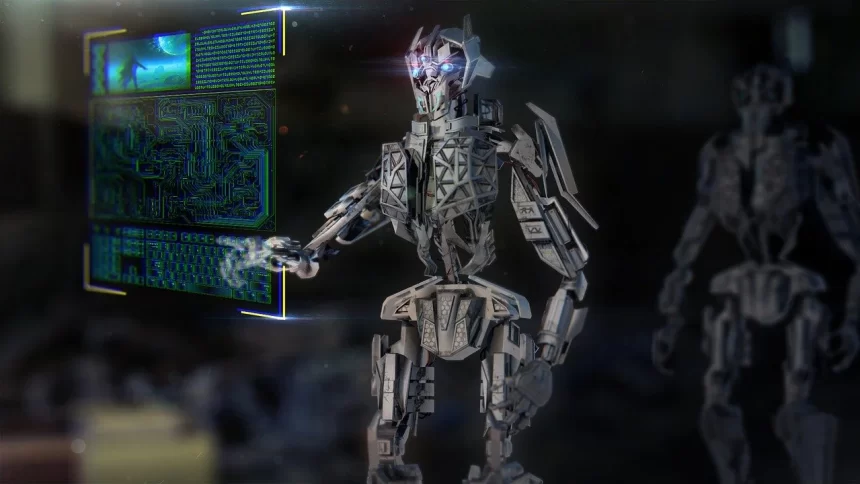As AI becomes more widespread, it is also becoming more autonomous, able without human control to function independently. This shows progress, but it also raises problems about control over AI. The AI Arms Race has pushed organizations to offer the most advanced algorithms around everywhere. But this can come at a cost, ignoring cultural and ethical principles vital to responsible AI.
Here are five predictions on what we can hope to see in AI in 2021:
- Something’s going to give around AI governance
Although regulations have not yet reached a boiling point, in 2021, AI governance will continue to be a big topic. As AI becomes more prevalent, more stakeholders are waking up to the possible challenges it poses to the public. In response, organizations everywhere will be expected to provide responsible, open, and impartial AI systems, from the most cutting-edge to the laggards. But whose obligation is it to ensure that this occurs and regulates AI-government, companies, business groups, or any combination?
If businesses want to control themselves before the government does, they will have to take action to ensure fair and impartial data that feeds their AI. And that their models are empathic, open, and robust. Organizations will also need to develop a way to closely track their AI with a comprehensive simulation capability and automated oversight. So, it does not go off the rails as it “learns.” So far, organizations have come up short, and this year, government regulators will crank up the heat unless they make significant strides.
- Most customers would remain wary of AI
With many major consumer companies in the hot seat around dubious AI ethics, AI is still not trusted by most people. For many, that’s because they don’t understand it or even know that they use it daily. Consumers get so many free AI-powered services that they don’t know what they’re giving up in return, namely their personal data. Unless the market better educates clients or introduces regulations to protect them, they cannot anticipate the risks AI will present. Or how to defend themselves, as long as the general public continues to be ignorant.
Despite this, there is some evidence that we are turning the corner on the trustworthiness of AI. 81% of Pega’s upcoming survey business leader respondents said they are hopeful that AI bias will be adequately mitigated in five years. As more public wakes up to AI impacting their lives, businesses had better hope that this turns out to be true. Because they will begin to ask more challenging questions that further erode trust in AI, causing companies to answer them.
- Digital Transformation (DX) finds its opportunity
With COVID-19 highlighting the drastic need for digital transformation in 2020, the trend will only continue in 2021. To adapt to the pandemic’s new realities, companies were forced DX vision plans and implement them. Leaders wonder what other DX projects are feasible that they once thought were out of reach after seeing this success.
There will be more demand for AI automation and close monitoring of those AI interactions, given growing consumer queries and increased challenges. In the post-COVID age, hyper-automation can help streamline workflows. However, companies will also need to consider what AI is doing to disenfranchise any of their customers.
- Companies will increasingly drive AI to the edge
If computation and storage capacity increases, at the enterprise network edge, more computational power and functionality can be accessed. A study found that 41% of business leaders agree that extended edge use cases are highly dependent on AI’s maturation. It indicates a complementary partnership between the two technologies, such as automation and machine learning. Computing power at the edge will rise with the proliferation of the IoT devices and the increased acceptance of 5G. It is fueling this trend, and the ability to exploit AI at the edge will also grow.
Companies would want to ensure that everything syncs up to a central brain for a holistic customer view to be successful. Eventually, isolating AI into edge computing silos will reduce AI’s power. They can push the limits of what is possible only by ensuring the edge is continuously linked to a central location.
- The “go-to” approach for AI deployment will become ModelOps
In 2021, ModelOps will reach a tipping point as a way for mainstream companies to better develop and operationalize their AI models, much like the way DevOps has given structure to the way applications are deployed. This will provide them with a more systematic way to develop, test, and deploy AI models via the Cloud quickly and responsibly.
Next year, with ModelOps, more companies will efficiently push their AI models up the food chain. It will also ensure that IT has enough structure to put in guardrails. This process should not be so restrictive that agility and creativity are suppressed, particularly with citizen data scientists. ModelOps will assist organizations everywhere to strike the right balance in 2021.
Conclusion
There is no doubt that, in 2021, AI will be in the spotlight. And it’s not skepticism that goes away. As AI becomes more widespread, it is likely to create more structure and controls around AI processes and policies. With so much ability to benefit companies and customers everywhere, AI will change the game if handled wisely.










